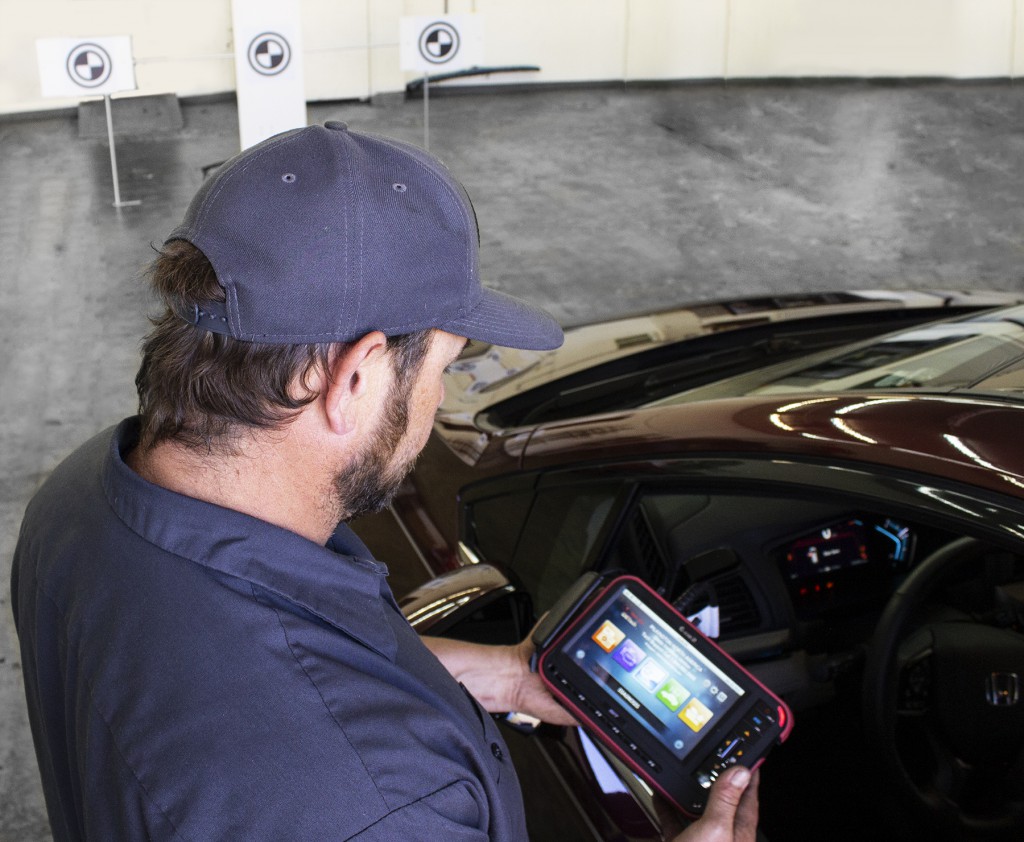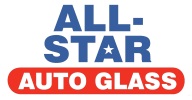Forward facing cameras are becoming extremely popular in new vehicles and it is likely this trend will continue. For the purposes of replacing a windshield, this could mean lengthier wait times or even multiple stops to a glass shop and the dealership to complete the entire replacement process. This is due to costly calibration equipment that smaller shops may not be prepared to purchase. Let’s take a minute to talk through your options as a consumer.
What Is ADAS and What Does It Stand For?
If your vehicle was made in 2013 or newer the likelihood of some form of ADAS (Advanced Driver Assistance Systems) is very high. Driver lane assist, lane departure warning, heads up display, or even rain sensing wipers are all features your car may possess. And guess what? Any damage to the windshield can cause these features not to function properly! What is worse, if the windshield sustains damage causing it to be replaced, it is the glass shop that is not only going to fix/replace the windshield but will likely need to recalibrate the systems within it and if a shop does not possess the equipment to do this you are going to have to make an additional stop to the dealer or other calibration specialist and the shop will likely tell you “we only let the dealer do that work.” Or “It is a safety feature . . . you will need to take the vehicle to the dealer to have a recalibration completed.” The question is what do you do in the meantime? Do you really want to drive it from a shop to the dealer? Do you want to pay the additional cost? A glass shop can direct bill the insurance. The dealer generally cannot! Either way getting it completed under one roof either at a dealership or glass shop that provides calibration services is the way to go.
So lets get to the point. Someone is telling you, “you need to have your sensors recalibrated.” The question is what do I need to know to make the right decision?
In order to do a recalibration on your windshield a glass shop will need one of 2 pieces of equipment currently available in the aftermarket. An Opti-Aim which is supported by Pilkington glass, or an Autel System which can be purchased from many vendors. These systems cost between 15,000 and 25,000 and I know because we have both! The dealer may use a different system and is likely proprietary and brand specific but that is another story I will address in a moment.
But back to recalibration- Your vehicle only needs specific features recalibrated if it has a forward-facing camera! We recalibrate it to make sure it is aimed in the correct direction and will work in the same manner it did when you came in. By changing the camera angle, you thereby change the functionality of the cameras features and very subtle features can become much larger 10-20-30 feet in front of your vehicle! There are many features that use the camera including lane departure warning, adaptive cruise control and others but there are plenty of features that do not require recalibration including heated wiper park, rain sensing wipers, and heads up display for instance. Your dealer or local glass shop can help you to know if your vehicle requires recalibration if you are unsure.
So we’ve established that your vehicle is equipped with features needing a recalibration, what next?

The first question may be cost and that depends on your insurance deductible. We will assume you are insured and that you have coverage requiring a deductible so the comprehensive deductible will be your out of pocket expense. But you ask I would still like a quote? Generally an aftermarket OEM windshield will run you somewhere between $250.00 and $500.00 depending on the features, and the calibration can cost as much as $1200.00 if completed by the dealer. The aftermarket calibration falls within $300.00 and $599.99 for the most part so you could easily be pushing $1000.00 to have your windshield replaced.
More Questions about ADAS Calibration
Do I have to have it recalibrated? Will my insurance cover it? Will they test the system when completed?
Yes, the features are safety systems and every manufacture recommends having the system recalibrated to the new camera position. Yes, your insurance will cover the cost with the proper coverages. Yes, many of the calibrations are done in the shop under ideal conditions. These “static” calibrations do not generally need to be tested on the road as all the parameters are tested in the shop. There are “dynamic” calibrations that take place on the road as the technician is driving your vehicle. This process is done by having the equipment talk to your vehicle’s internal computer and uses ques from the road such as signs and painted lines to figure out its place in the world. Some vehicles require both but either way dynamics require the car to be driven and tested while statics do not. At the end of the test you will receive a printed and signed document stating the recalibration was completed satisfactorily.
One other thing! The shop is required to run a pre, and post, scan for your vehicle. This scan will pull any “codes” generally indicating a problem. These codes can cause the shop not to be able to run the recalibration. Not to worry as these codes, at times, can be reset or the shop will be able to tell you what to tell your dealer or repair shop if it needs repair. Most shops charge an additional fee for the actual scan itself so ask if you are curious.
In the end the safety features in your vehicle provide extra layers of protection against collisions and injuries. They come at the price of higher vehicle costs and repair costs. This in turn will also affect your insurance rates. Keep in mind a $1500.00 windshield in a brand-new vehicle will likely become a $900.00 windshield in 2-3 years and likely a $300.00 to $400.00 windshield in 5 years and so on. As these features become more relevant prices will tend to equalize and as newer features come out the old will fade away. In all honesty who knows where this goes in 20 years? Your car may simply drive to a shop to be fixed while you work or watch the kids. Or, you may simply be using a ride share and skipping these costs and inconveniences altogether.

